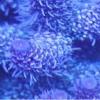-
Posts
1,732 -
Joined
-
Last visited

ridetheducati replied to Curtis Scott's topic in General Discussion

ridetheducati replied to Curtis Scott's topic in General Discussion

ridetheducati replied to Curtis Scott's topic in General Discussion

ridetheducati replied to Curtis Scott's topic in General Discussion

ridetheducati replied to BowieReefer84's topic in General Discussion


